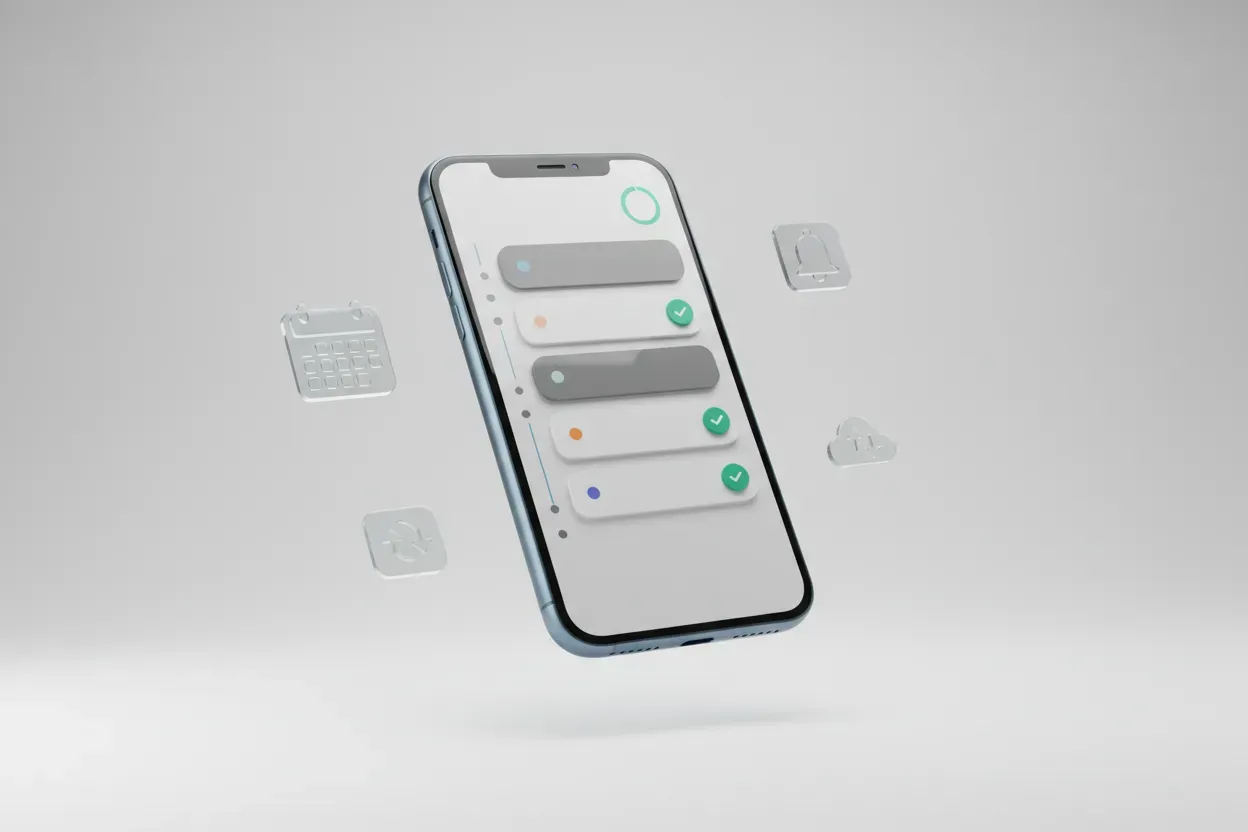What’s Your Strategy for Developing Leadership Skills in Others?
Cultivating leadership skills within a team is crucial for organizational success, so we’ve gathered insights from CEOs and other top executives on their preferred methods. From providing continuous learning opportunities to leading by example and offering feedback, here are the top ten strategies these professionals employ to nurture future leaders.
- Provide Continuous Learning Opportunities
- Set Incremental Leadership Goals
- Empower Personal Development Choices
- Encourage Decision-Making Freedom
- Assign Stretch Leadership Tasks
- Implement a Buddy System for Growth
- Foster an Inclusive Growth Environment
- Combine Mentorship with Hands-On Projects
- Delegate for Diverse Leadership Development
- Lead by Example and Offer Feedback
Provide Continuous Learning Opportunities
I’ve found that one of the most effective methods for fostering leadership skills in my team is to continuously place opportunities for learning in front of them. I truly believe that, if given proper resources and opportunities, anybody can grow into a good leader.
As a manager, business owner, or team leader, it is your responsibility to provide them with those resources. Whether these come in the form of formal training, webinars, online courses, or something else, making these resources readily available and encouraging this type of learning works to create a culture of growth and development in your team.
Once this culture is in place, it becomes exponentially easier to spot potential leaders among your team and cultivate the leadership skills you’re looking for.
Rob Deming, COO, Rate Retriever
Set Incremental Leadership Goals
Set stretch goals on a rolling basis. Leadership skills are one of those things that require a good bit of planning to excel consistently. Sure, sometimes you get lucky, and someone gets thrown in the deep end and comes out a champion swimmer, but most of the time, you need to build those skills up little by little in a planned fashion.
Start small—make it a goal for a high performer to take the lead on a project. Or, maybe just have someone shadow a current leader and learn what makes their day-to-day operations tick. Usually, I would say to create one new opportunity to try and gain leadership experience per quarter, as that gives enough time to digest and improve.
Kate Kandefer, CEO, SEOwind
Empower Personal Development Choices
Let them take the lead on their development. I’ve always found it best to leave the option of additional leadership development up to my people, though naturally, I go out of my way to help them develop those skills once they decide that they would like to take their career in this direction.
Usually, this means starting small and working their way up by choosing a project that they can take full ownership over, while providing them with the resources they will need to succeed and the framework to let them lead where normally they would be part of the team.
Dragos Badea, CEO, Yarooms
Encourage Decision-Making Freedom
There are two qualities that distinguish a leader from a non-leader: a leader always knows what to do, and is always ready to take responsibility. People feel it and follow you.
To develop these qualities in my team members, I try to give them as much freedom as possible. They make their own decisions about how they will solve the task, and then defend it to other team members. This develops in employees the ability to think independently and be responsible.
Viktoria Dolzhenko, Team Lead, Itez
Assign Stretch Leadership Tasks
While 72% of leaders report feeling burnt out by the end of the day, only 15% are prepared to combat burnout. The business ecosystem needs leaders, and if you want to foster leadership skills in your team members, “Stretch Assignments” can go a long way.
Fundamentally, these are tasks or projects that challenge team members to step outside their comfort zones and take on more responsibilities in their current roles. The sole aim of these assignments is to push individuals to develop new skills, gain valuable experience, and demonstrate leadership potential, so they can take on a cross-functional role, represent the team in strategic meetings or presentations, or position themselves as a leader when the time comes.
Ritika Murkya, Executive Assistant, eResource Scheduler
Implement a Buddy System for Growth
Corporate environments thrive on the shoulders of efficient leaders, and if you want to cultivate leadership skills in your team members, the Buddy System is a fantastic way.
How does the method work? Well, here, you pair up team members in a way where each pair has one mentor with excellent leadership attributes and one individual who wants to develop leadership skills. This dynamic pairing acts as a symbiotic relationship where both parties benefit.
While the mentor shares experiences and provides guidance and feedback, the mentee learns, grows, and applies those lessons. You can encourage regular check-ins between buddies to discuss progress, challenges, and goals, so everyone is accountable and the momentum isn’t hindered. In addition, you can also rotate pairings periodically to expose mentees to different leadership styles and perspectives. Isn’t that a win-win strategy?
Tanya Agrawal, Account Executive, eResource Scheduler
Foster an Inclusive Growth Environment
Team members’ leadership qualities can be promoted by providing opportunities for development and growth, creating a nurturing and inclusive environment, and encouraging open communication. They use projects to allow all team members to learn how to solve problems and make more complex decisions. People learn what they do well and where they need to improve through feedback and constructive criticism.
Also, through it, one can establish events, training workshops, and mentorship programs that provide valuable knowledge and guidance. Collaboration and teamwork are crucial, as well as creating opportunities for team members to learn from each other and to share their insights. Being appreciated and acknowledged increases confidence, creates an environment conducive to growth, and encourages individuals to step up into leadership roles.
Bill Lyons, CEO, Griffin Funding
Combine Mentorship with Hands-On Projects
Leadership isn’t just a goal; it’s the foundation of our success.
Over the years, we’ve learned that the best way to build leadership is through personal mentorship, hands-on project management, and ongoing learning.
We’ve seen firsthand how pairing every team member with an expert in their field accelerates personal and professional development.
Our in-house research shows a 40% boost in leadership aptitude among team members participating in our mentorship programs.
We also believe in the value of hands-on learning. Putting team members on real, actionable projects develops their technical skills and teaches important leadership skills such as decision-making, team coordination, and strategic planning.
An example is a junior developer leading a project to improve messaging security protocols. Not only did this project help build our company’s reputation for security, but it also enabled the developer to develop their confidence and skills, demonstrating the direct effect of experience.
Continuous learning is an integral part of our leadership development approach. We provide access to training courses, workshops, and seminars focusing on the most up-to-date business communications and leadership trends. As a result, our team remains one of the best in the industry, armed with the knowledge and skills needed to lead.
In short, through mentoring, real-world accountability, and ongoing learning, we’ve built a culture where leadership thrives. Not only has this enabled us to establish ourselves as a leading partner in business messaging, but it’s also enabled us to build a team that’s capable, self-assured, and prepared to take on the future.
Uku Tomikas, CEO, Messente
Delegate for Diverse Leadership Development
As a leader, I put a lot of effort into delegating responsibilities to my team so they may develop as leaders. I think it’s important to provide each team member an opportunity to develop by offering them varied duties. I make sure that the projects I assign fit each team member’s interests and strengths. In areas where they are naturally gifted, this enables them to flourish and advance their abilities.
In addition, I support a culture that gives team members the confidence to take initiative and seize new opportunities. Building a culture of trust and encouragement encourages team members to step up and take on new tasks. I express my gratitude for their contributions and let them know that I value and appreciate what they have done. I offer direction and coaching to team members who are keen to develop their abilities and assume leadership positions.
Kartik Ahuja, Digital Marketer, kartikahuja.com
Lead by Example and Offer Feedback
In my role as the Montreal Division Manager at Precondo, I employ a multifaceted approach to cultivate leadership skills in my team members. One effective method is leading by example. I consistently demonstrate the qualities of a strong leader through my actions, decision-making processes, and communication style.
By setting a positive example, I inspire my team members to emulate these behaviors and strive for excellence in their own roles. Additionally, I provide regular feedback and constructive criticism to help team members identify areas for improvement and refine their leadership skills. This feedback is offered in a supportive and collaborative manner, fostering a culture of continuous growth and development within the team.
Furthermore, I encourage team members to take ownership of their projects and initiatives, allowing them to exercise autonomy and develop their leadership abilities in real-world scenarios. By combining these approaches, I ensure that my team members are equipped with the necessary skills and confidence to lead effectively in the dynamic and competitive real estate industry.






































